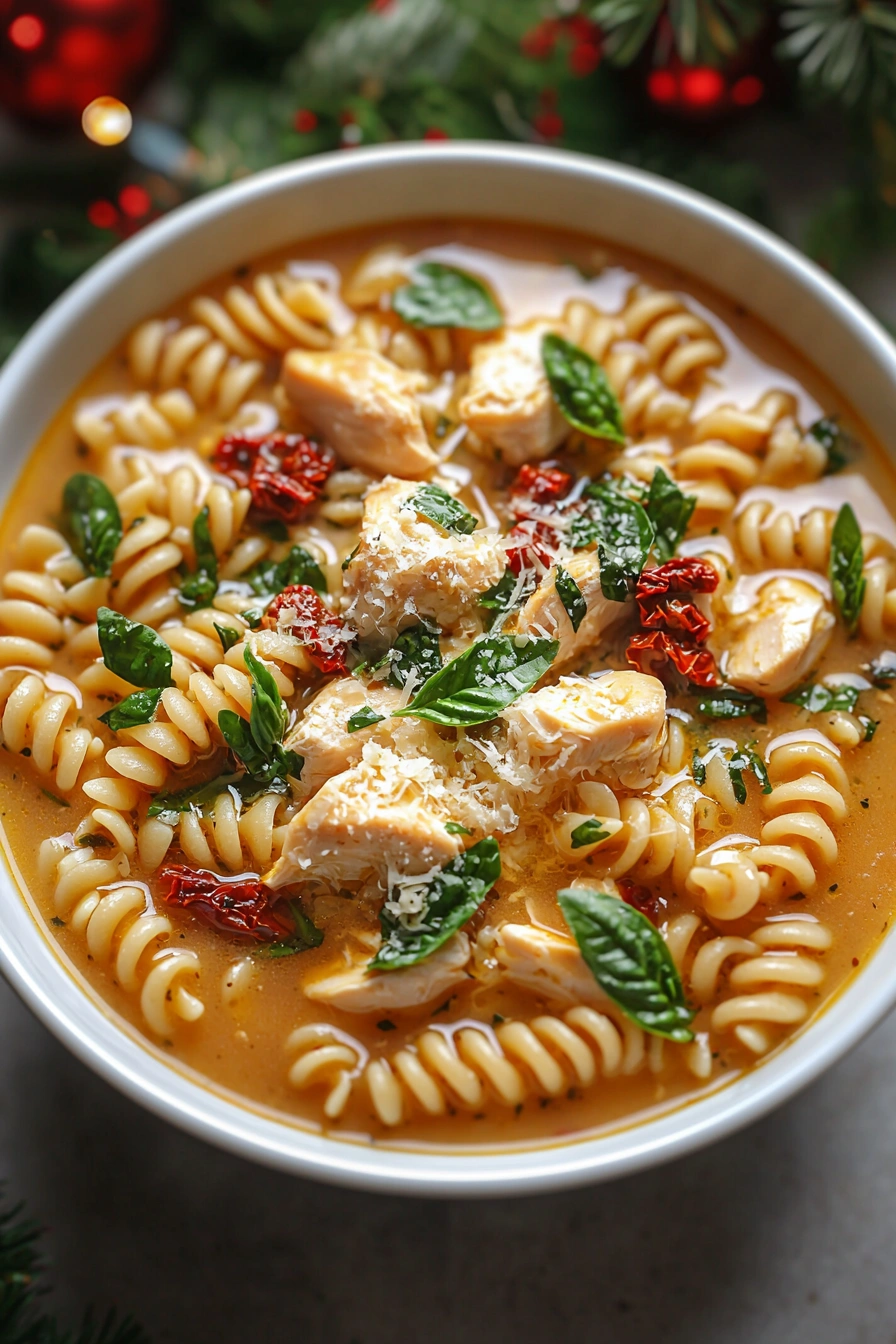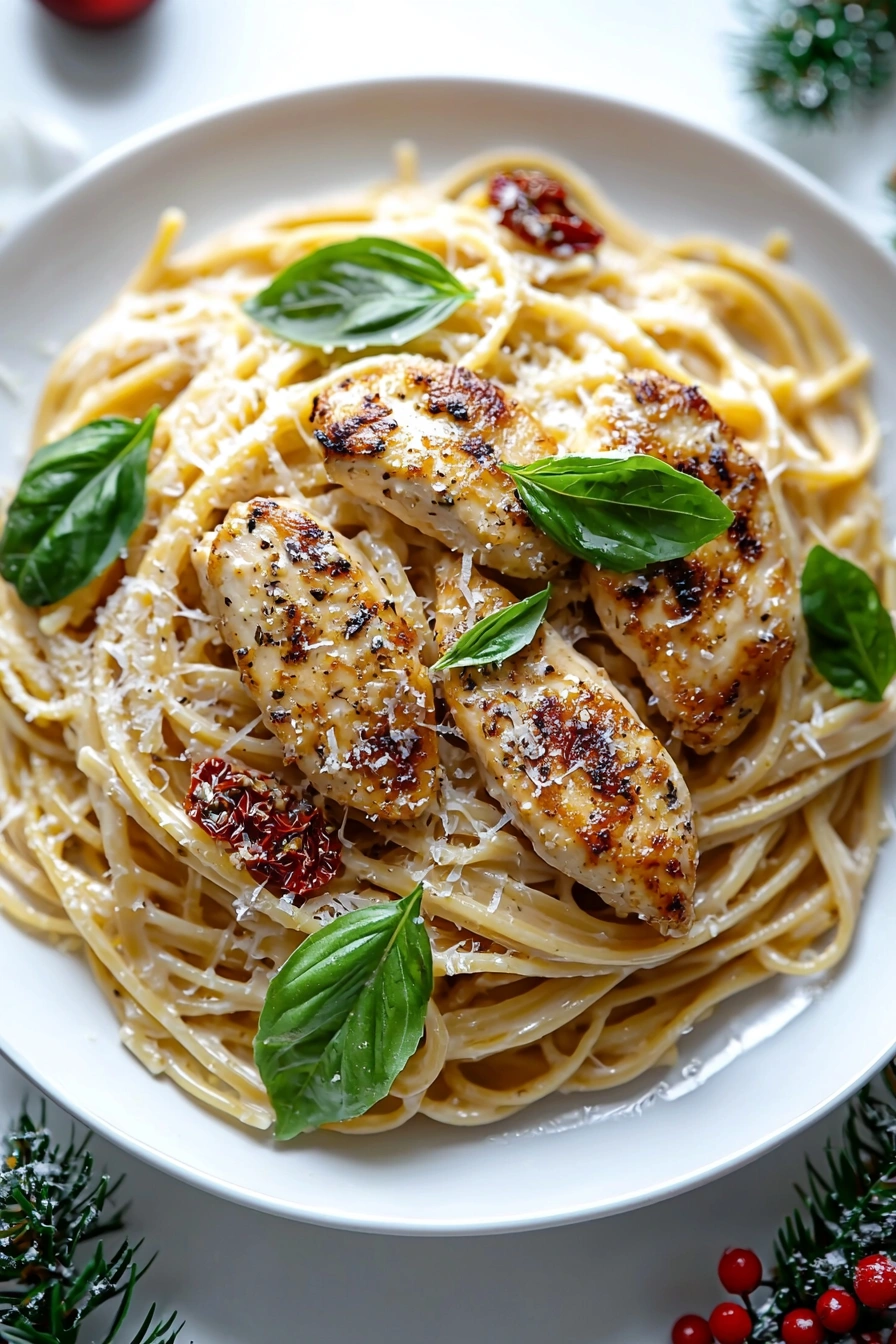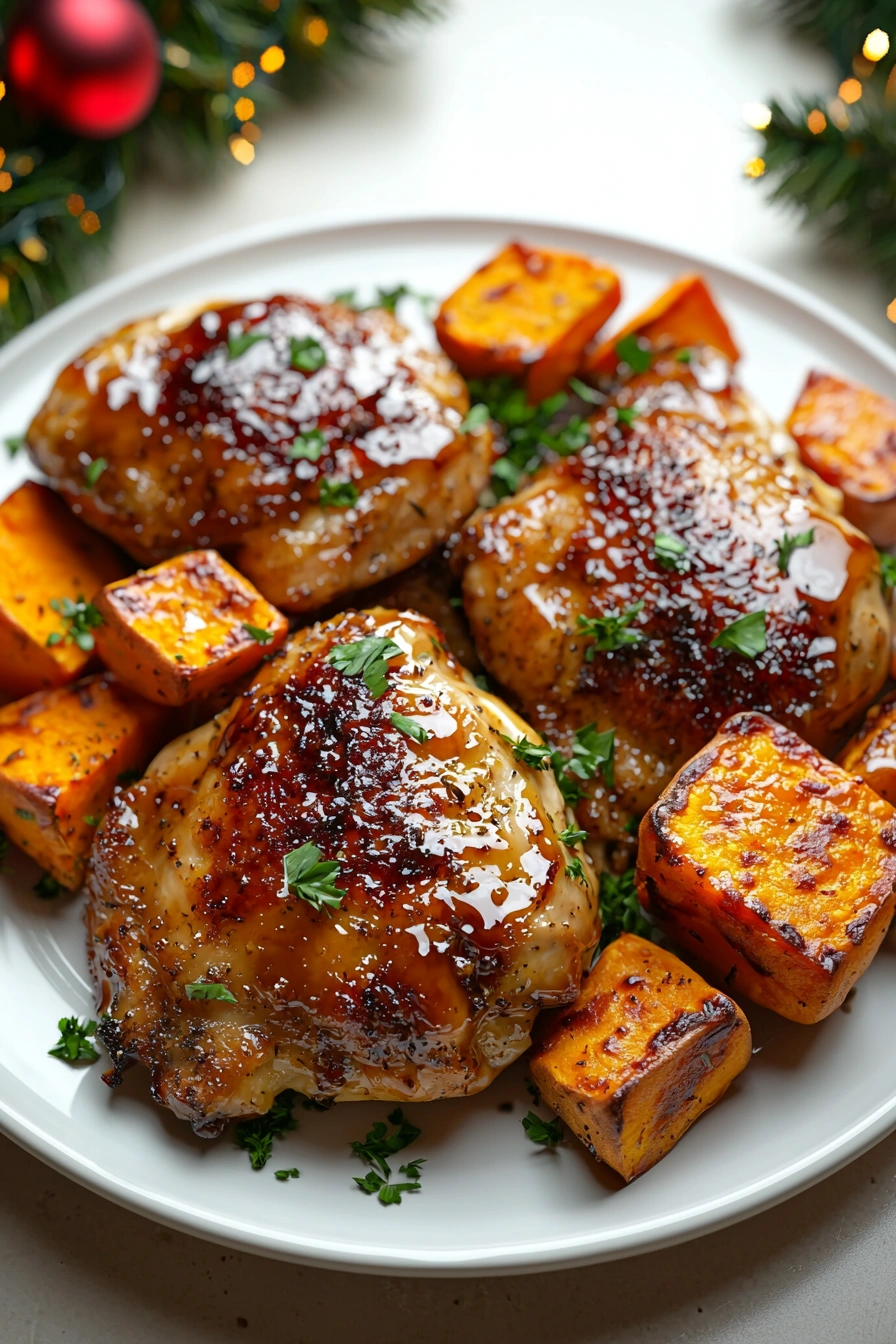Oyakodon was one of the first Japanese dishes I ever tried to make because I was fascinated by its simplicity and comfort. I had just moved into my first apartment and wanted something homemade that didn’t require fancy ingredients. I remember standing over the stove, hoping I wouldn’t overcook the eggs, and when I finally took a bite, it felt like a warm hug in a bowl – savory, sweet, and incredibly soothing.
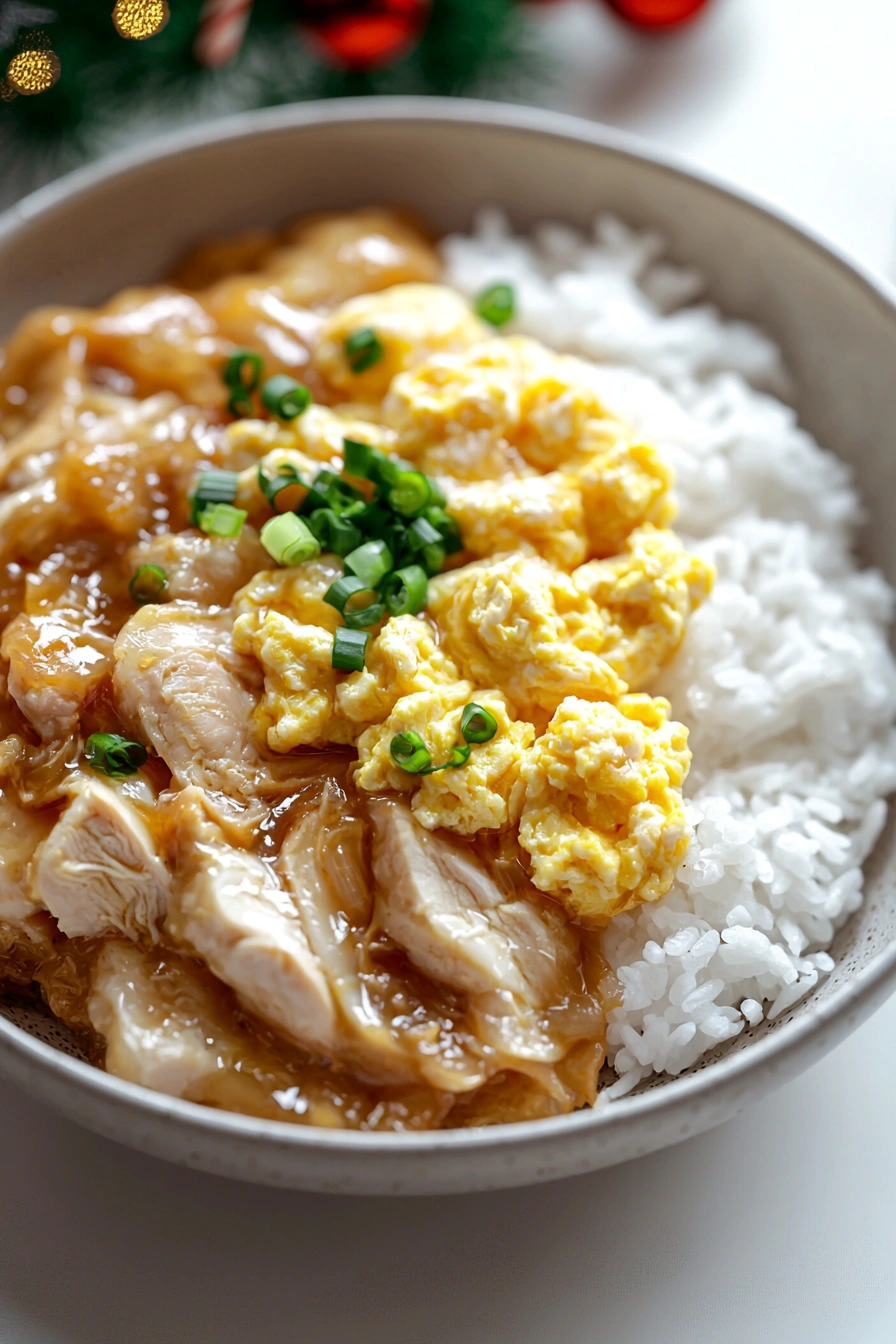
Since then, I’ve turned to Oyakodon whenever I need a quick yet satisfying meal. The tender chicken simmered in a flavorful broth with soft, barely-set eggs poured over rice creates the kind of comfort food that makes you close your eyes after the first spoonful. It’s budget-friendly, quick to prepare, and always delicious – a true staple in my kitchen.
Ingredients
Here’s what I use for this recipe. You can always make substitutions if you prefer!
- Chicken thighs – Juicy and tender, perfect for simmering in broth.
- Eggs – Lightly beaten to create a soft, custardy layer over the chicken.
- Onion – Adds sweetness and depth to the simmered broth.
- Dashi stock – The essential base for authentic Japanese flavor.
- Soy sauce – Provides savory umami and saltiness.
- Mirin – Adds gentle sweetness and richness to the sauce.
- Sugar – Balances the saltiness of the soy sauce and deepens the flavor.
- Cooked rice – The foundation that soaks up all the flavors.
- Green onions – Fresh and bright, used as garnish for a pop of color.
Tools You’ll Need
- Small saucepan or skillet with lid – Ideal for simmering the chicken and eggs evenly.
- Cutting board and knife – For slicing the chicken and onions.
- Mixing bowl – To lightly beat the eggs before adding to the pan.
- Ladle or spoon – Helps scoop everything over the rice gently.
- Rice cooker or pot – For cooking fluffy white rice.
- Chopsticks or spatula – Used to stir and control the egg as it cooks.
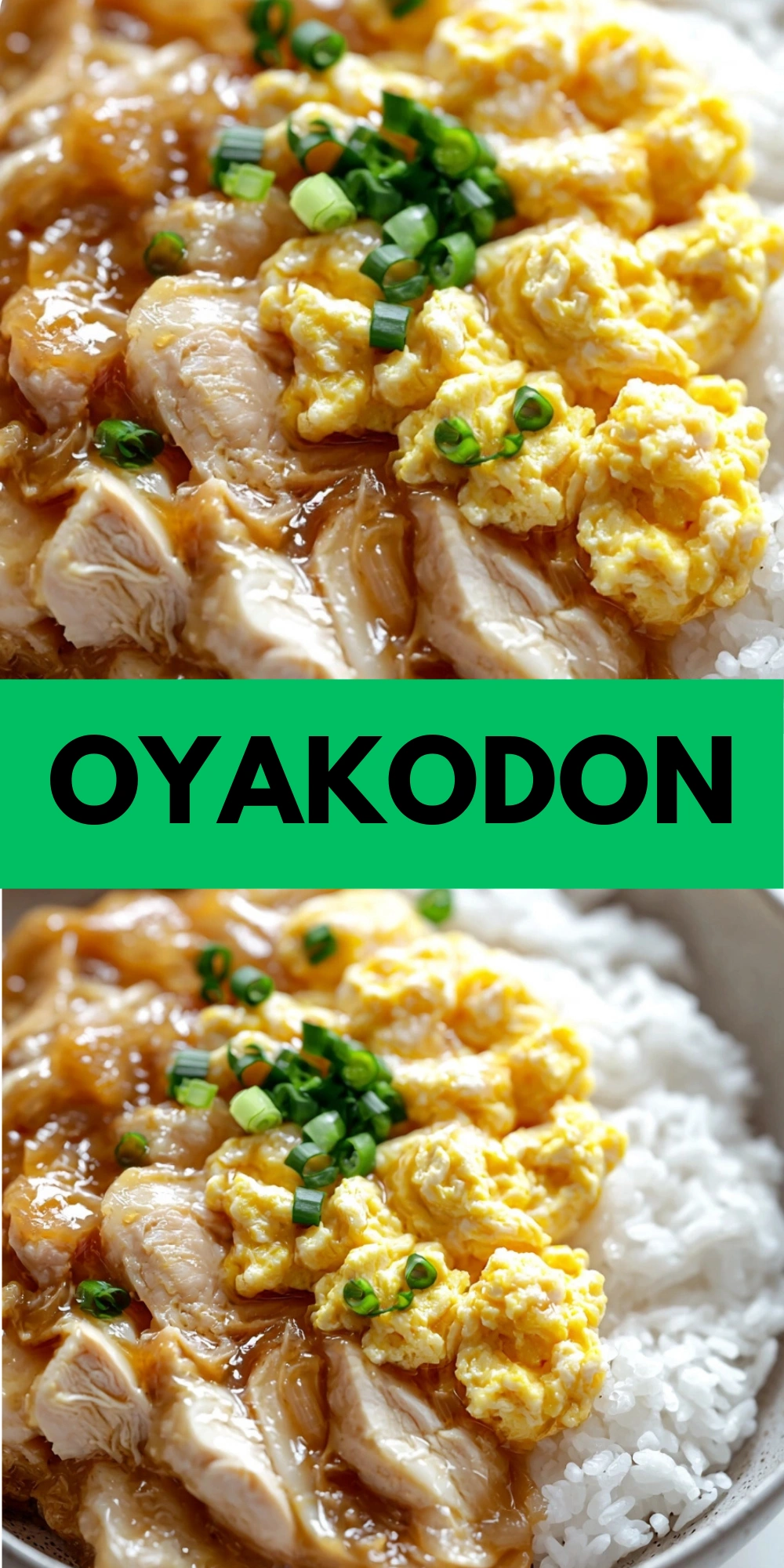
Instructions
Step 1: Prep the ingredients
I start by thinly slicing the onion and cutting the chicken thighs into bite-sized pieces. Then I beat the eggs lightly in a small bowl – I don’t overmix because I like seeing some white and yellow marbling in the final dish.
Step 2: Make the broth
In a small skillet, I combine dashi, soy sauce, mirin, and sugar. I bring it to a simmer over medium heat until everything is well blended and aromatic.
Step 3: Cook the chicken and onions
Once the broth is bubbling, I add the sliced onions and let them simmer for 3–4 minutes until they soften. Then I gently place the chicken into the pan and let it cook through, about 5–7 minutes depending on thickness.
Step 4: Add the eggs
When the chicken is done, I reduce the heat to low and slowly drizzle the beaten eggs over the mixture. I don’t stir – instead, I cover the pan and let it cook for about 1–2 minutes until the eggs are just set but still slightly runny.
Step 5: Assemble the bowl
I scoop a portion of hot steamed rice into a bowl, then gently slide the chicken and egg mixture over the top. I finish it with a sprinkle of chopped green onions for freshness and color.
Tips
I prefer using boneless chicken thighs for juicier results, but chicken breast works if you slice it thin.
I don’t cook the eggs too long – soft-set eggs make the dish so much better.
You can make instant dashi using powder if you don’t have time to make it from scratch.
I often double the sauce if I want extra broth to soak into the rice.
If I want a heartier version, I add mushrooms or a dash of sake to the simmering liquid.
Ways to Serve
Serve it with a side of miso soup and pickled vegetables for a complete Japanese-style meal.
I sometimes add shredded nori or a sprinkle of shichimi togarashi for extra flavor.
It also makes a great lunchbox meal – just pack it in a sealed container and microwave gently.
For a low-carb version, you can serve it over cauliflower rice or steamed vegetables.
Frequently Asked Questions
What does Oyakodon mean?
“Oyako” means parent and child in Japanese, referring to the chicken and egg combo. “Don” is short for donburi, meaning rice bowl.
Can I use chicken breast instead of thighs for Oyakodon?
Yes, just slice it thinly to keep it tender and adjust the cooking time slightly.
Is Oyakodon sweet or savory?
It’s a perfect balance of both! The mirin and sugar add sweetness, while soy sauce and dashi give it a deep umami flavor.
Can I make Oyakodon without dashi?
You can substitute with chicken broth if needed, but dashi gives it the most authentic taste.
See You in the Kitchen
I hope you try this Oyakodon recipe and see just how comforting and satisfying it can be. It’s one of those dishes I come back to again and again because it’s so simple yet deeply flavorful. I’d love to hear how yours turns out!
Happy Cooking!
Print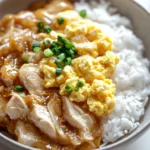
Oyakodon
- Total Time: 25 minutes
- Yield: 1 serving 1x
- Diet: Low Salt
Description
Looking for the best Oyakodon recipe? This easy and quick Japanese rice bowl features tender chicken, fluffy eggs, and a simple savory sauce. Great for weeknight dinners or healthy lunch ideas. A comforting and flavorful one-bowl meal that’s perfect for beginners and packed with umami goodness. Simple, healthy, and budget-friendly!
Ingredients
- 2 boneless chicken thighs
- 2 eggs
- 1/2 onion, thinly sliced
- 1/2 cup dashi stock
- 1 1/2 tbsp soy sauce
- 1 tbsp mirin
- 1 tsp sugar
- 1 bowl cooked white rice
- Chopped green onions for garnish
Instructions
- Thinly slice onion and cut chicken into bite-sized pieces.
- In a skillet, combine dashi, soy sauce, mirin, and sugar. Bring to a simmer.
- Add onions and simmer until softened, about 3–4 minutes.
- Add chicken and cook until done, about 5–7 minutes.
- Beat eggs lightly and pour over chicken without stirring. Cover and cook 1–2 minutes.
- Spoon mixture over a bowl of steamed rice and top with green onions.
Notes
- Don’t overcook the eggs – they should be soft and slightly runny.
- Use chicken breast if you prefer, but slice thin for tenderness.
- Add mushrooms or a dash of sake for more depth.
- Instant dashi works well for a quicker version.
- Prep Time: 10 minutes
- Cook Time: 15 minutes
- Category: Main Course
- Method: Stovetop
- Cuisine: Japanese
Nutrition
- Serving Size: 1 bowl
- Calories: 470
- Sugar: 6g
- Sodium: 680mg
- Fat: 18g
- Saturated Fat: 5g
- Unsaturated Fat: 11g
- Trans Fat: 0g
- Carbohydrates: 42g
- Fiber: 1g
- Protein: 28g
- Cholesterol: 220mg
